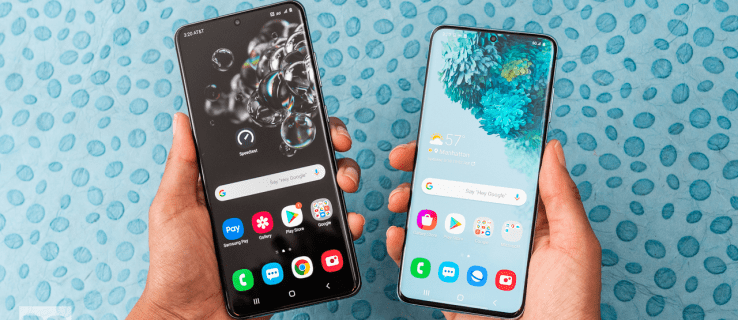Device Links
Not all mobile carriers use the same band. GSM and CDMA networks are very different, and using a device intended for one on another isn’t always possible.

For example, if you’re on AT&T or T-Mobile, you might not be able to switch to Verizon without also changing your phone.
But say you’re not buying a phone from your carrier. Can you tell what network your phone is compatible with?
You can and there are various ways of finding out.
Method 1 – Check the SIM Slot
If you’re using an older generation phone, looking at the SIM card slot is the quickest way to determine if it’s locked to a GSM or CDMA network.
Traditionally, CDMA phones came without SIM cards. They didn’t need them as the phone number used to be linked directly to the device. Hence, a SIM card slot indicated GSM network compatibility.
However, this method is less efficient on newer phones, especially those compatible with 4G and 5G technology.
These almost always come with SIM card slots, and you may need to use a different verification method.
Method 2 – Go to the Settings App
Your phone contains all the information you can possibly need about itself and the network compatibility.
It’s just a matter of going to the right tab to pull the information.
You’re looking for anything regarding a MEID, ESN, or IMEI number. MEID and ESN numbers are associated with CDMA networks. Finding an IMEI number means the phone is configured for GSM networks.
Find the Network on an Android Phone
Here’s how to find the MEID, ESN, or IMEI on an Android device.
- Go to the “Settings” app.

- Scroll down to the “About Phone” section.

- Tap and select “Status.”

Find the Network on an iPhone
Here’s how to find network information on your iPhone.
- Go to the “Settings” app.

- Select “General.”

- Go to the “About” tab.

Note that the exact pathway to reaching the desired tab may vary slightly depending on your exact model and how the menu is structured.
Method 3 – Look Up the Model Number
A quick online search of your phone’s model number is another fast way to learn if it’s GSM or CDMA-compatible.
Usually, the model number is written on the packaging. This could be helpful if your battery is dead, and you can’t go into the Settings app.
Method 4 – Check the Documentation
Every phone comes with comprehensive documentation from the manufacturer containing a full list of features, how to use it, etc.
The phone’s paperwork should also hold information regarding compatible networks. But this is probably the slowest method you can use to determine if you have a GSM or CDMA phone.
Method 5 – Contact Your Carrier
If you’re unsure what type of network your carrier has, you can always contact them for information. This is a reliable way of finding out what you need if you buy a phone directly from the carrier.
Many carrier phones are locked to a specific network. That’s not exactly necessary, but it’s an effective way to keep customers longer.
Another reason to contact the carrier is that some of them may sell phones compatible with both networks.
For example, Verizon often sells phones that can be used on GSM and CDMA network, despite being exclusively a CDMA carrier.
FAQ
Are manufacturer phones locked to a network?
Buying a phone directly from the manufacturer is the best way to ensure you won’t be locked to any particular network and can easily use your phone almost anywhere in the world.
Neither Samsung, Apple, Huawei, or any other major manufacturer typically locks their devices to GSM or CDMA networks.
Only some mobile carriers tend to do this. But carriers like Verizon offer unlocked phones, meaning you can switch to a different carrier and network if you terminate the contract.
Consider Upgrading Your Standard
GSM and CDMA 2G and 3G networks have seen a lot of use, but that’s quickly about to change. Ever since 4G was introduced, more and more carriers have made the switch to the newer LTE standard.
Unless your phone can’t handle more than 2G or 3G, it likely uses LTE and only reverts to GSM or CDMA if you can’t get LTE coverage.
But GSM and CDMA are quickly becoming obsolete, especially given the quick adoption of 5G technology. In the next couple of years, it’s unlikely you’ll see many 2G and 3G phones being sold or any coverage for GSM and CDMA networks.
Some carriers have even announced they might close 3G networks to upgrade to the faster 4G LTE standard before going all-in on 5G.
Therefore, whether your phone is GSM or CDMA-compatible may not matter soon enough.
Let us know in the comments section below if you believe GSM and CDMA should continue to receive long-term support or if spending money on 4G and 5G infrastructure is the superior course of action.
Disclaimer: Some pages on this site may include an affiliate link. This does not effect our editorial in any way.
















